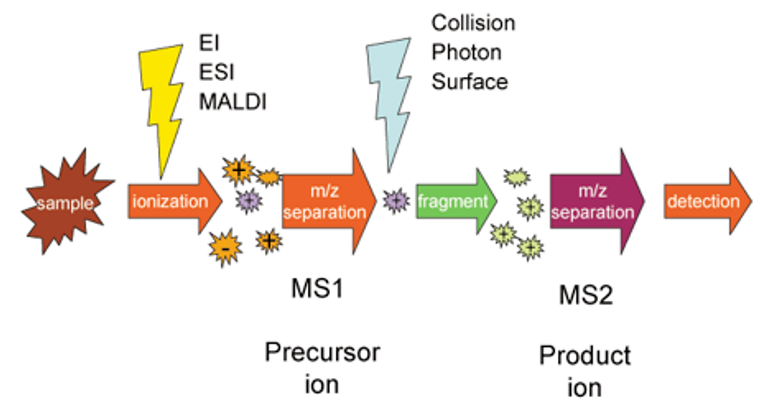As a novel therapeutic strategy, oligonucleotides are continuously explored and have revealed the potential to become an essential treatment method in the research field. However, because oligonucleotides are much larger than traditional small molecules, their preparations involve multiple synthetic steps. Typical solid-phase syntheses will likely introduce impurities or invalid sequences, complicating analysis and characterization. In addition, oligonucleotides have specific physicochemical properties, which may induce negative charges, phosphorylation to produce PO impurities, hydrolysis of purine bases to form depurination fragments, and hydroxyl groups on the ribose. The formation of these related impurities is relatively challenging to separate from the main and full-length products; thus, the development of oligonucleotides relies heavily on mass spectrometry analysis and quantification. Although synthetic oligonucleotides can be chemically modified to enhance stability, they also become more difficult to analyze in organisms. The rapid and accurate identification of oligonucleotide modification types and sites poses challenges for the development of analytical methods.
Our Oligonucleotide Characterization Services
Creative Proteomics' advanced mass spectrometry platform and analysis system served as an efficient and convenient option for impurity profiling. Inspired by the mass spectrometric analysis of protein biomolecules, we are capable of using tandem mass spectrometry to identify long oligonucleotide fragment sequences.
5'-3' phosphodiester bonds made up the backbone structure of oligonucleotides and their derivatives. In the collision-induced dissociation (CID) fragmentation mode, also known as the most frequent mode used in commercial mass spectrometers, phosphodiester and glycosidic bonds may be broken at multiple sites, in which resulting in rich fragmentation of nucleic acids in the tandem mass spectra. Nevertheless, this fragmentation information from the oligonucleotide tandem mass spectra allows us to identify the sequence composition precisely.
What Can We Do for You?
➢ Molecular weight confirmation using ESI-MS, LC-MS and/or MALDI-TOF
➢ Detailed structural analysis using LC-MS
➢ Sequence confirmation using LC-MS/MS and/or exonuclease treatment followed by MALDI-TOF MS analysis
➢ Impurity profiling and identification using LC-MS
➢ pI/charge variants using icIEF/IEX
Platforms
We use MALDI-TOF or ESI-MS mass spectrometry to characterize and identify oligonucleotide impurities, and each technique reserved its advantages and disadvantages. We apply one or both instruments for your analysis, depending upon the nature of the synthesized sequence.
MALDI-TOF MS
MALDI-TOF MS is well suited for high throughput requirements and characterizes nucleotides up to 50 bases in length.
ESI-MS
ESI-MS is most suitable with oligonucleotides applications larger than 50 bases (>13 kDa), such as gene synthesis, and has upregulated instrumental accuracy for molecule descriptions.
 http://en.wikipedia.org/wiki/Tandem_mass_spectrometry
http://en.wikipedia.org/wiki/Tandem_mass_spectrometryAdvantages
- Capable of identifying and characterizing target molecules of >0.01%, low-level impurities
- Unique sequence analysis tools enhance additional values
- 100% quality control
Reference
- N M El Zahar et al. Chromatographic approaches for the characterization and quality control of therapeutic oligonucleotide impurities. Biomed Chromatogr. Jan;32(1).






